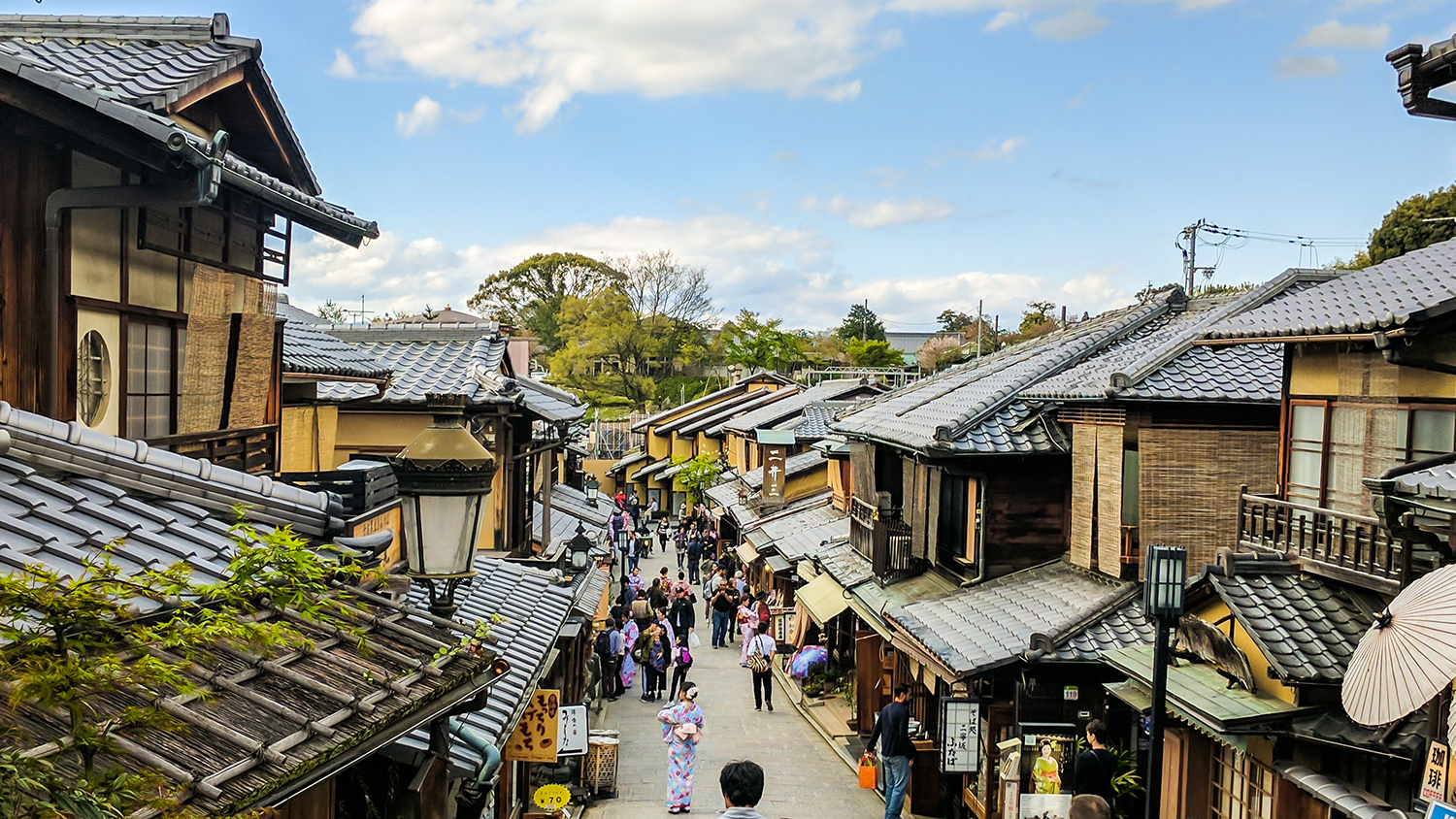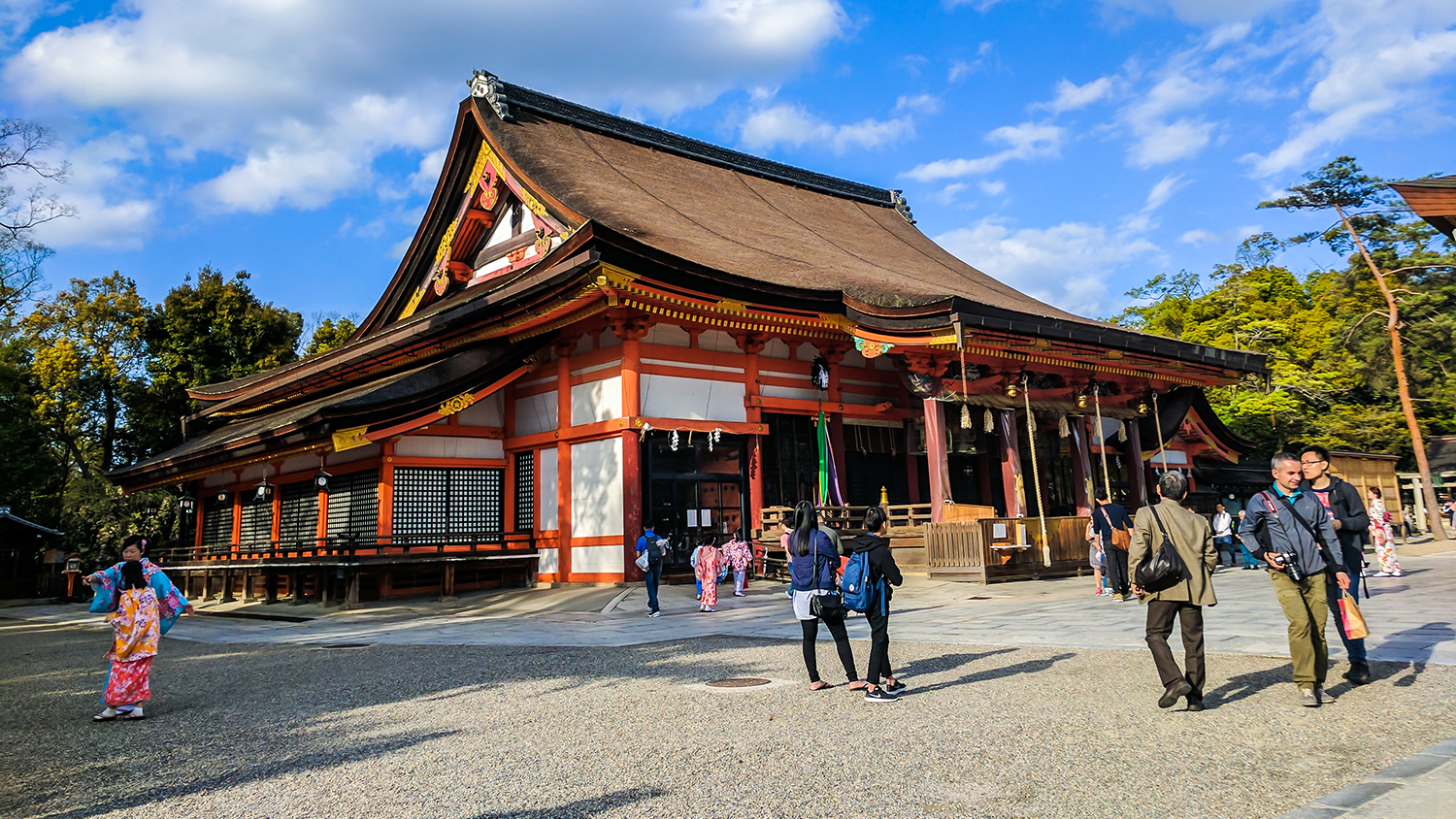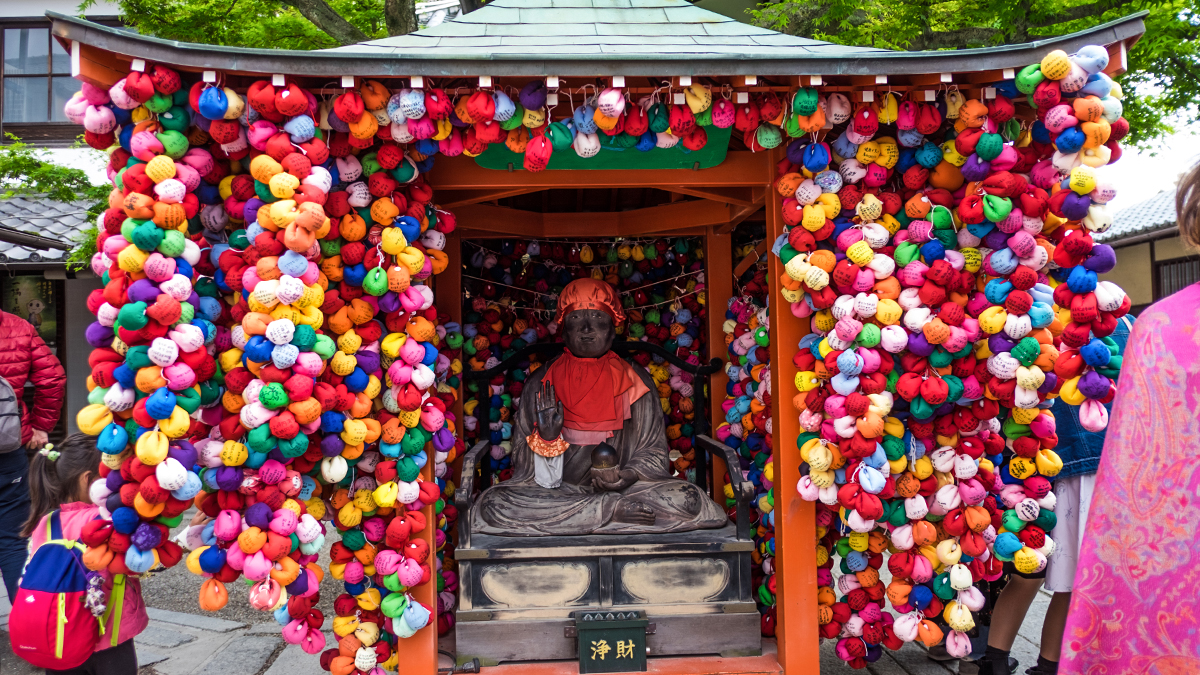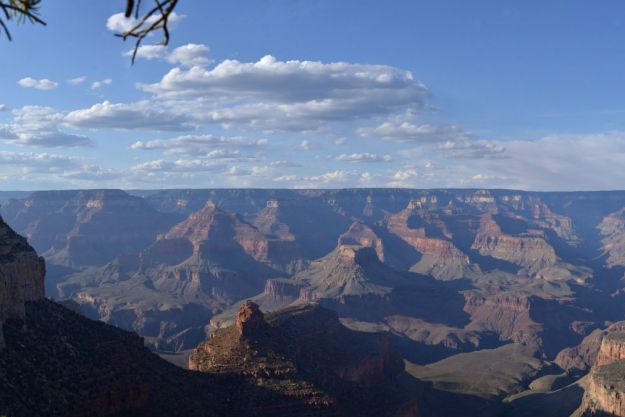 In Kyoto, you’re surrounded by history at every turn. The city served as the nation’s capital and Imperial residence from 794 to 1868 and is now Japan’s seventh largest city with a population of 1.4 million. Although Kyoto survived many fires and war damage throughout the centuries, it was mostly spared during WWII, so many of its original shrines, temples, and historic buildings still stand today.
In Kyoto, you’re surrounded by history at every turn. The city served as the nation’s capital and Imperial residence from 794 to 1868 and is now Japan’s seventh largest city with a population of 1.4 million. Although Kyoto survived many fires and war damage throughout the centuries, it was mostly spared during WWII, so many of its original shrines, temples, and historic buildings still stand today.
When you arrive at Kyoto station, the first thing you’ll notice is that the city is full of tourists — 10 times more so, it seems, than in Tokyo or Osaka. While the subway can get you pretty much anywhere in Japan’s larger cities, you’ll find that the bus is very helpful and convenient in Kyoto for traveling between shrines and temples, as some can be 40 minutes apart. The city is full of souvenir shops that sell everything from handmade handkerchiefs to the finest matcha tea, so this is the place to buy gifts and trinkets for the folks back home. While there are hundreds of sites to see and fantastic restaurants to enjoy, these are the places you absolutely must visit during your time in the City of Ten Thousand Shrines.
Play
Gion
As Kyoto’s most famous and traditional entertainment district, Gion is full of shops, restaurants, and historical landmarks. The area’s streets are lined with wooden machiya merchant houses, which have narrow, 5-6 meter-wide fronts but extend back as long as 20 meters.
Kabuki theater is popular in this area, but it is most famous for its high concentration of geiko (the Kyoto term for geisha) and maiko (geiko apprentice). You’ll find many women and men dressed up in traditional garments, but spotting a real geisha on her way to an appointment at an ochaya (high-end teahouse) is a rarity. We suggest joining a Kyoto Free Walking Tour because the knowledgeable staff will guide you through the most important parts of historic Gion, and maybe even teach you how to spot an authentic geisha.
Maruyama Park
Located next to the Yasaka Shrine between the Gion and Higashiyama districts, this lovely park is one of the most popular places to view the cherry blossoms in their full glory. At the center of attention is a tall shidarezakura, or a weeping cherry tree, which turns into an expansive pink canopy that is lit up at night. Stop in for a stroll before or after walking the streets of Gion.
Fushimi Inari Taisha
This shinto shrine was established in the year 711 (which predates the capital’s move to Kyoto in 794) and is dedicated to Inari, the god of rice. It’s famous for thousands of vermillion torii gates, which stand astride a network of trails that wind 233 meters up into the forest behind the ground’s main buildings. The pictures don’t do this place justice.

The entire summit takes 2-3 hours to complete, so we suggest hiking 45 minutes to the Yotsutsuji intersection, taking in the view of Kyoto down below, and turning back if you’re short on time. Visit at night after the majority of tourists are gone. The large shrines are alight, as are the smaller clusters you’ll come across during your ascent. But most of the walk is dark with a peaceful, mystic air. But beware of wild boars — they’re known to come around at night, so visit after dusk at your own risk.
Located just a 20-minute train ride southwest of Kyoto, Suntory Yamazaki Distillery is a must-visit for any whisky enthusiast. The facility sits at the base of Mt. Tennozan where the Katsura, Uji and Kizu Rivers converge, so you’re met with a lush setting upon entering the grounds. Take a tour of the distillery, which includes a peek at their stunning copper stills and a walk through the impressive barrel aging room. All tours are conducted in Japanese, but there are audio guides available so you can follow along in your preferred language.
After you check out the facilities and grounds, you will be led into the tasting room where you can experience the unblended whisky that makes up Yamazaki Single Malt and learn how to make a proper Highball. After you’re filtered through the gift shop, you have the opportunity to purchase tastes of pretty much anything from the Beam Suntory portfolio. We sprung for pours of Hakushu 18, Hibiki 17, and Hibiki 21, which we enjoyed from a high table in the open air room as we slowly became Japanese whisky-obsessed. Finish your tour with a stroll through Yamazaki’s whisky library and take in the thousands of different bottles lining the walls.

Shop
You’ll find outposts of this denim chain throughout Japan, but we were partial to the Nishiki Market store in Kyoto. The staff is friendly, knowledgeable and will help you find the perfect wash or fit. They have everything from jeans to jackets to shirts, even cool home goods like a denim wall organizer. Their products are high quality but also affordable, which makes Japan Blue a great place to stop if you’re looking to rock Japanese denim without breaking the bank.
This bustling five-block market is a must for anyone interested in sampling some of Kyoto’s best street food. Each stall has a distinct specialty, and you’ll find everything from sushi to homemade candies to pickles to tako tamago, a delicious delicacy of baby octopus that’s been stuffed with a quail egg, candied, and skewered. You’ll find other retailers selling souvenirs like handmade paper fans and vintage kimonos, knife stores, and small eateries that can seat a few people. The market is covered, making it a great place to visit if you experience a rainy day during your trip.

Founded in 1560 by Fujiwara Aritsugu, this popular knife shop is one of the oldest in Japan. Aritsugu originally made swords for Japan’s Imperial Family, but as the 17th and 18th centuries ushered in peaceful periods for the country, the shop shifted its focus from weaponry to statue-carving tools and kitchen cutlery. Located on the north side of Nishiki Market, this shop will be of interest to any enthusiastic home chef, and the experience is well worth fighting the pesky crowd. After choosing a knife — we bought a long, thin design that is perfect for slicing meat and fish — the staff uses a revolving whetstone to give it a final edge and demonstrates the proper care techniques. They can also custom engrave the knife with your name, which is great for treating yourself and makes for a beautiful gift. Just remember to place your new knife in your checked luggage on your return trip. You don’t want it to end up here.
Not only is Kyoto Station the main transportation hub for the city, it’s also a shopping mecca that houses four different areas where you can purchase clothing, souvenirs, food and about anything else you can imagine. The Cube is a shopping mall that occupies three floors on the northwest side of the building where you’ll find confectioneries, clothing boutiques, and beauty and grooming shops. Japan’s major department store, Isetan, takes up a whopping 13 floors while the Porta Underground Shopping Mall connects directly to Kyoto’s subway and bus stations. Asty Square and Asty Road give travelers about to embark on longer journeys a place to buy last-minute souvenirs and bento boxes before boarding their trains.

Eat and Drink
Surrounded by a lush Japanese garden, Junsei was the most beautiful and peaceful dining experience we had during our trip. The specialty here is yudofu, or cubes of tofu that are boiled in a light broth and served with spring onions and other accoutrements. Order the Yudofu Course, which comes with its namesake dish, vegetable tempura, dengaku (grilled soybean paste on a tofu skewer), sesame tofu, rice and pickles. You can also order a small plate of sashimi to round out the meal (which we did and it made us overly full). Walk it off by strolling through the garden and snapping pics of its flora, footbridges and glittering ponds.

This small Kyoto chain (there are four locations around the city) started out as a pastry shop in 1486. Around the mid-Edo period, like many sweets businesses of its kind, they began making soba and other noodles once Zen trainee monks could no longer keep up with the demand. Honke Owariya’s freshly ground, kneaded and cut soba is made from high-quality Hokkaido buckwheat flour and served with a perfectly seasoned rishiri kombu (seaweed) broth that’s made with Kyoto’s pristine city water. Order a bowl of the kake soba topped with a poached egg or chicken and Japanese leeks if you’re craving a delicious, comforting meal.
For meat lovers who want to feast on real wagyu beef, Hafuu is a necessity during your time in Kyoto. The elegant restaurant features a long chef’s counter where you can watch the staff in action as they prepare each succulent morsel for you to enjoy. Spring for the original dinner set, which includes six courses along with rice or bread. The meal starts with a lightly roasted beef and thinly-sliced brisket that melt in your mouth. We were served a potato soup that was one of the most divinely creamy versions of the dish we’ve ever tasted, along with a simple salad. The main event is your choice of a wagyu sirloin or filet that is grilled to perfection and served with simple sauces that elevate the meat in an unbelievable way. The meal finishes with dessert, though good luck making room.

The luxurious Ritz-Carlton Kyoto sits on the shores of the Kamogawa River and offers expansive views of Higashiyama Mountain. Even if you’re not staying here, make it a point to come in for lunch and afternoon tea in the sun-drenched Lobby Lounge. Take a seat on the terrace — which overlooks the hotel grounds and a cascading waterfall — order a pot of their original tea blend, and decide what to indulge in for your midday meal. As we were there during cherry blossom season, we ordered a special sakura bento box that was almost too beautiful to eat. The triple-layer box was filled with things like sashimi, cold thin noodles with fresh vegetables, a soft-boiled egg from Nakamura farm, and high tea-inspired egg salad and smoked salmon sandwiches. Pastries from Pierre Hermé Paris were presented on a bed of pink sugar to end the meal on an extra sweet note.

Kyoto Ramen Koji, Kyoto Station
Kyoto Station is packed with shops, restaurants and takeout counters that serve elaborate bento boxes (perfect for a train ride), but the best part about the massive transportation hub is its ramen food court. Situated on the 10th floor of the building, the Kyoto Ramen Koji corridor is home to eight ramen eateries, each of which boasts the traditional style from a different region of Japan. We settled on Masutani, a Kyoto-based brand that’s been around since 1948. We ordered from the vending machine outside the small shop, handed the tickets to a chef behind the counter, and sipped an ice cold Sapporo while we waited. The ramen at Masutani is perfect, made with a rich pork and soy broth and chunks of pork that complement the thin, chewy noodles with every bite.

Sleep
This beautiful hotel is located steps from Kyoto Station, so you’ll always be steps from the JR train lines, subway and main bus hub. The grand lobby greets guests with a vaulted ceiling and plush sitting areas where you can take a load off when you first arrive. The rooms are polished and comfortable and feature large bathrooms with all the amenities to make you feel at home. Kyoto Century Hotel boasts four onsite restaurants and a bar, meaning you won’t have to travel far for a solid meal. Go for the buffet breakfast, a smorgasbord of both Western and Eastern-style dishes that will fuel you for a day of sightseeing ahead. The lobby’s pastry boutique is a great place to grab an afternoon pick-me-up or traditional sweets to give as gifts. If you’re looking to make restaurant reservations or snag a good recommendation on where to eat, the concierge staff is extremely helpful and accommodating — when we asked for a place to get traditional tofu, they recommended Junsei, and it was excellent. If you’re looking for a comfortable, convenient and affordable place to stay, Kyoto Century Hotel is a best bet.
Original photography by Max Schwartz.





